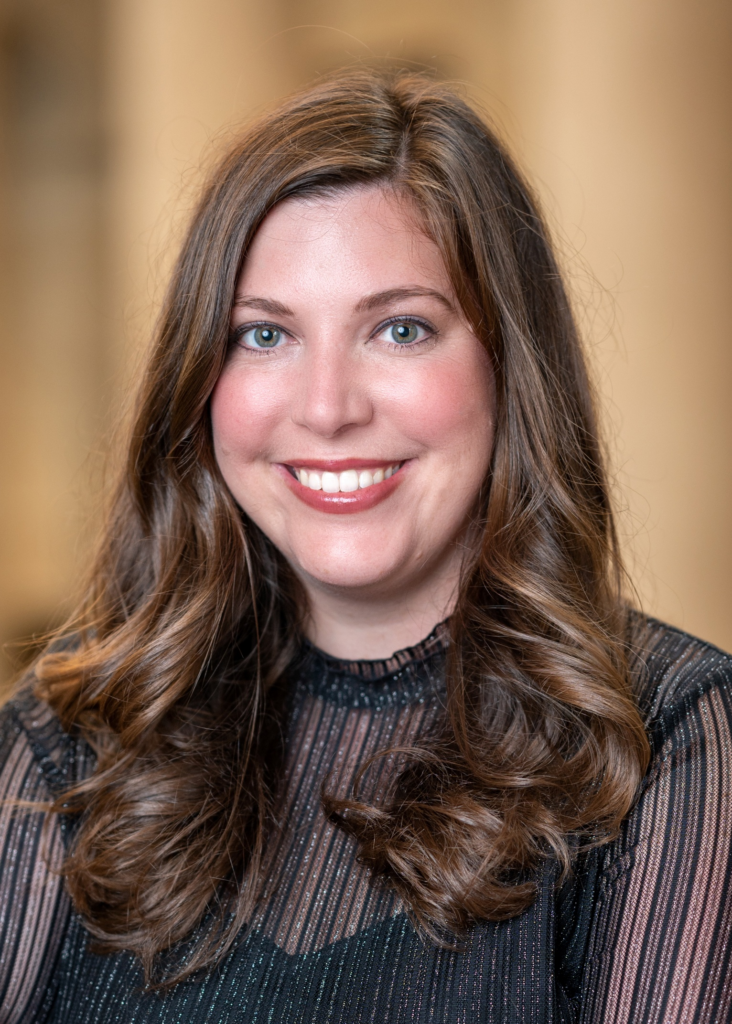
Brittany Luberda is the The Anne Stone Associate Curator of Decorative Arts at the Baltimore Museum of Art. She curated She Knew Where She Was Going in 2021. This interview was conducted on April 25, 2025.
What inspired and shaped your timeline and process for the creation of this exhibition?
The exhibition was specific to the murder of George Floyd, and the timing of the BMA acquiring 5 quilts from Souls Grown Deep. The quilts met the current moment.
Brittany shifted and planned an exhibition based on a book that had been written about civil rights and Gee’s Bend, and conducted extensive research as part of developing the exhibition. Brittany stated that she was especially interested in investigating how people outside of the Gee’s Bend community became connected to the quilts. Her research guided her to learn about a program that was focused on starting black businesses in order to have a secondary economy where black people from Alabama could make money independently. A gentleman [William Arnett] who was traveling through and connected with a friend with a friend in New York to tell them about the great quilts saw at Gee’s bend. Following his connection, Luberda stated that people packed up quilts and they were auctioned off. She saw this as a larger connection of arts and human rights
Did you have any guiding ideas for this exhibition?
The exhibition was shaped around the audience of Baltimore. Luberda was impressed by the community of quilters in Baltimore, a community which is very involved in the arts in general. In the process of talking to quilters in Baltimore she learned a lot. “Because of the great migration, the individual stitching techniques changed a lot. Some quilters in Baltimore will say that they can look at a quilt and tell by the stitches which state the person’s ancestors came from when they moved up north.” Luberda was also interested in bringing in people involved in the George Floyd protests. She wanted them to see the work done by activists and black artists from the early 19th century, as well as the hard business work done by the women of Gee’s Bend. As she stated, “The story of Gee’s Bend is a story of women self infranchising.”
What’s something you really hoped everyone would know by reading what you wrote?
She wanted to show how the money that Gee’s Bend artists made went out to the whole community. When someone sold a quilt, the money made would be divided through neighbors and friends, built on a sense of shared community and a commitment to caring for one another. Luberda wanted to bring a sense of this deep togetherness into her exhibition.
I really loved the promotional materials that included the African American Quilters of Baltimore and the Virtual Quilting Bee! How did those get included?
The virtual included 400 quilters across the country over zoom all making a quilt together inspired by Loretta Pettway’s quilt block. The goal was to create a collaborative quilt to raise money, but they ended up with many extra quilt blocks. Block submissions were so plentiful that the museum hired artist Susanne Cooly so she made a fabric artist book out of quilting blocks as a part of the exhibition.
What inspired the title of this exhibition?
The name of the exhibition was based on a quote from Nell Hall William’s, one of the artists’ daughters who described her mother’s process on the phone. William would lay all the blocks out and she would pick up the pieces and would know where she wanted all the blocks, as a part of her process in making “My way quilts,” or free expression quilts. William’s process was almost like a premonition, her daughters stating that she didn’t “need to see it, she knew where she was going,” emphasizing the volition and confidence behind her mothers quilts. Luberda talked about how meaningful this was, especially in the context of everything she had learned about the 40s and 50s.